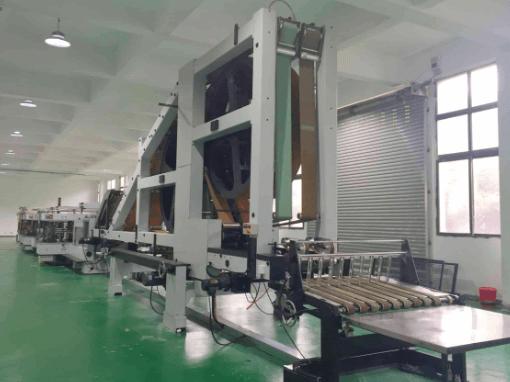Common Problems and Solutions in PP Cement Bag Production
Polypropylene (PP) cement bags are essential packaging materials widely used in the construction industry for cement storage and transportation.
They are favored for their durability, cost-effectiveness, and ability to protect the cement from moisture and external elements. However, like any manufacturing process, the production of PP cement bags is not without its challenges.
This article delves into the common problems faced in the manufacturing of these bags and offers effective solutions to address these issues.
They are favored for their durability, cost-effectiveness, and ability to protect the cement from moisture and external elements. However, like any manufacturing process, the production of PP cement bags is not without its challenges.
This article delves into the common problems faced in the manufacturing of these bags and offers effective solutions to address these issues.
Common Problems in PP Cement Bag Production
In this section, the author will list some common problems in PP cement bag production and give a solution.
Material Quality Issues
One of the most common problems in PP cement bag production is the inconsistency in material quality. Inferior quality PP materials can lead to bags that are weak and unable to withstand the weight and pressure of cement.
Solution:
Ensure a strict quality control process when sourcing PP materials. Only procure materials from reputable suppliers who adhere to industry standards and have a record of producing high-quality raw materials.
Solution:
Ensure a strict quality control process when sourcing PP materials. Only procure materials from reputable suppliers who adhere to industry standards and have a record of producing high-quality raw materials.
Print Quality Problems
PP cement bags often come with printed branding, information, and designs. Poor print quality can affect the overall appearance of the bags and may lead to a negative impression on customers.
Solution:
Invest in high-quality printing machinery and regularly maintain and calibrate the equipment to ensure crisp and vibrant prints. Use inks and dyes specifically designed for use on PP material.
Solution:
Invest in high-quality printing machinery and regularly maintain and calibrate the equipment to ensure crisp and vibrant prints. Use inks and dyes specifically designed for use on PP material.
Sealing and Stitching Issues
Proper sealing and stitching are crucial for the strength and durability of PP cement bags. Common problems include uneven stitching, weak seals, and improper stitching techniques.
Solution:
Implement stringent quality control procedures during the bag-making process. Use advanced stitching and sealing machinery, and regularly train workers to ensure that they follow correct procedures.
Solution:
Implement stringent quality control procedures during the bag-making process. Use advanced stitching and sealing machinery, and regularly train workers to ensure that they follow correct procedures.
Bag Dimensions Variability
Inconsistent bag dimensions can lead to problems in stacking and storing cement bags, causing inefficiencies in transportation and storage.
Solution:
Regularly calibrate and maintain cutting and folding machinery to ensure precise dimensions. Implement strict quality checks to reject bags that do not meet the specified dimensions.
Solution:
Regularly calibrate and maintain cutting and folding machinery to ensure precise dimensions. Implement strict quality checks to reject bags that do not meet the specified dimensions.
Static Electricity and Dust Accumulation
During the manufacturing process, PP bags can accumulate static electricity, attracting dust and making them appear unclean.
Solution:
Install static eliminators in the production area to reduce static buildup. Additionally, maintaining a clean and dust-free environment is essential to prevent dust from settling on the bags.
Solution:
Install static eliminators in the production area to reduce static buildup. Additionally, maintaining a clean and dust-free environment is essential to prevent dust from settling on the bags.
Environmental and Sustainability Concerns
The use of PP bags has raised environmental concerns due to their non-biodegradable nature. Finding sustainable alternatives and addressing these concerns is crucial.
Solution:
Invest in research and development to explore eco-friendly materials and designs for cement bags. Consider incorporating biodegradable additives into the PP material or switch to recyclable and reusable materials.
Solution:
Invest in research and development to explore eco-friendly materials and designs for cement bags. Consider incorporating biodegradable additives into the PP material or switch to recyclable and reusable materials.
Regulatory Compliance
PP cement bag production must adhere to various local and international regulations, such as safety standards, labeling requirements, and environmental regulations.
Solution:
Stay updated with the latest regulations in the industry and ensure that your production processes and materials comply with these standards. Regularly audit your manufacturing facility to guarantee compliance.
Solution:
Stay updated with the latest regulations in the industry and ensure that your production processes and materials comply with these standards. Regularly audit your manufacturing facility to guarantee compliance.
Transportation and Storage Challenges
Once the PP cement bags are manufactured, they need to be transported and stored efficiently. Problems may arise due to issues like inefficient palletization and difficulties in handling and stacking bags.
Solution:
Invest in modern palletizing equipment to streamline the loading and unloading process. Train workers to stack bags in an organized and efficient manner to maximize storage space.
Solution:
Invest in modern palletizing equipment to streamline the loading and unloading process. Train workers to stack bags in an organized and efficient manner to maximize storage space.
Conclusion
PP cement bag production is a critical aspect of the construction industry, and addressing common problems in this process is essential for ensuring product quality and customer satisfaction.
By following the solutions outlined above and continuously monitoring and improving production processes, manufacturers can mitigate these challenges and maintain high standards of quality, consistency, and sustainability in their PP cement bag production operations.
Additionally, staying informed about industry trends and adopting innovations in materials and technologies can further enhance the efficiency and sustainability of the production process.


